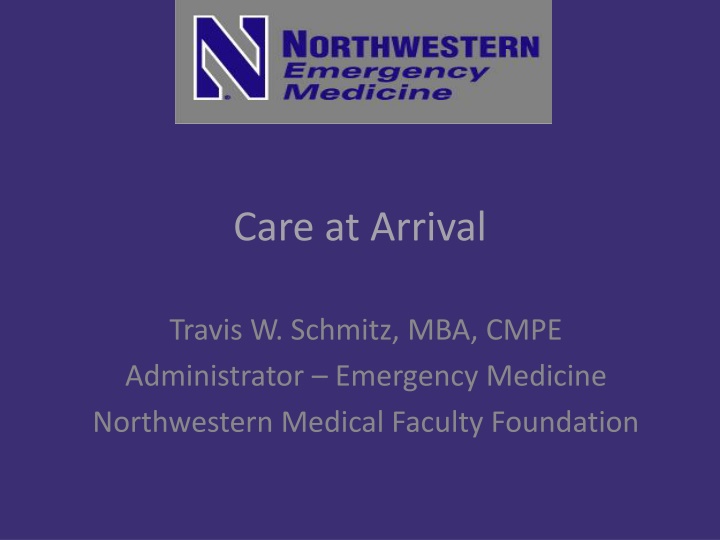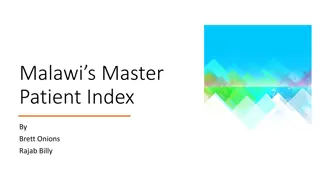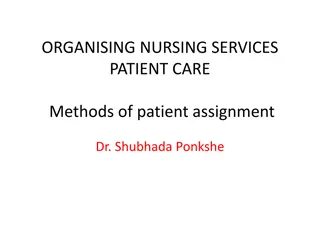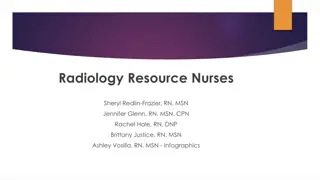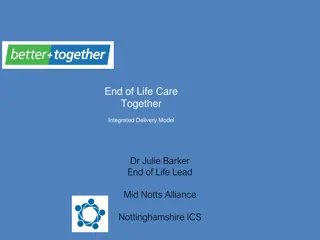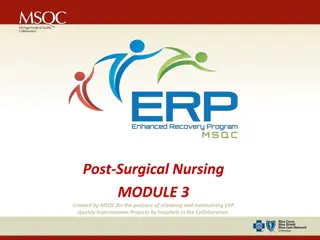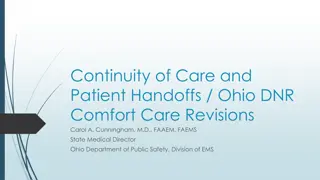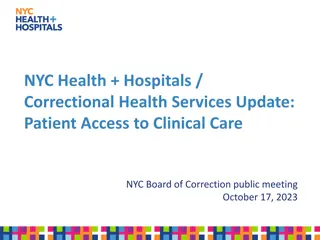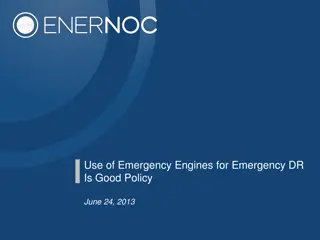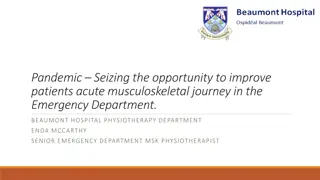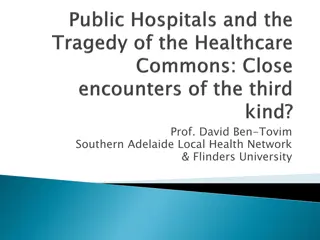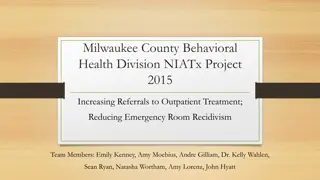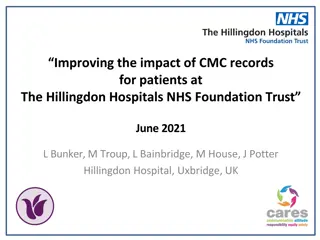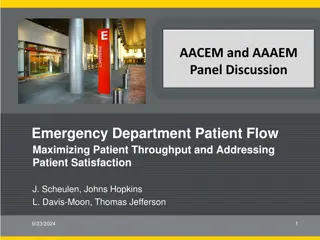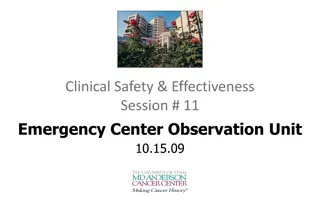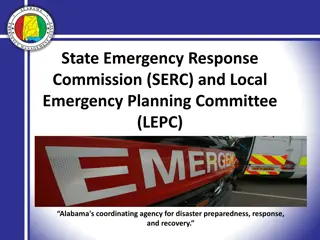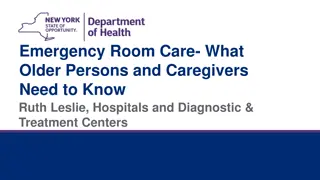Improving Emergency Department Patient Care with Care at Arrival Model
Emergency Medicine Administrator Travis W. Schmitz introduces the innovative Care at Arrival approach to enhance patient care in the emergency department. The model focuses on providing immediate treatment upon patient arrival to reduce wait times, increase patient satisfaction, and improve operational efficiency. By shifting the focus from traditional triage to proactive treatment, measurable improvements have been observed in patient outcomes. The Care at Arrival model integrates a team-based approach involving clinicians and nurses to deliver timely and efficient care to patients, ultimately aiming to enhance overall emergency department performance and patient outcomes.
Download Presentation

Please find below an Image/Link to download the presentation.
The content on the website is provided AS IS for your information and personal use only. It may not be sold, licensed, or shared on other websites without obtaining consent from the author.If you encounter any issues during the download, it is possible that the publisher has removed the file from their server.
You are allowed to download the files provided on this website for personal or commercial use, subject to the condition that they are used lawfully. All files are the property of their respective owners.
The content on the website is provided AS IS for your information and personal use only. It may not be sold, licensed, or shared on other websites without obtaining consent from the author.
E N D
Presentation Transcript
Care at Arrival Travis W. Schmitz, MBA, CMPE Administrator Emergency Medicine Northwestern Medical Faculty Foundation
Disclosures Personal Disclosures Started at Northwestern January 2013 No personal claim to any measure of success Adapted from models used at: Penn State Hershey Massachusetts General Hospital Implemented pilot April 2012 Has proven to be operationally and financially sustainable Measurable improvements in patient satisfaction, reduced LWBS rate. Still a work in progress
Problem Statement Baseline 2011 data showed the following: Average door to doctor time in the emergency department was 79 minutes Only 34% of patients see a physician within 30 minutes of arrival, resulting in: ~12-14 patients leaving without being seen by a doctor (rate= 5-6% LWBS) Patient satisfaction at the median of UHC benchmarks Limited opportunities to improve throughput due to inpatient holding, lab/radiology turnaround, etc.
Traditional Model Triage nurse evaluates each arriving patient, determines acuity, assigns an ESI level, and determines priority to be seen Patients are then placed in a treatment room as capacity allows, as determined by the charge nurse This system may appear logical but during times when patient demand exceeds ED capacity, backlogs occur During crowded times, this system is designed to assure waiting, create bottlenecks, achieve generally poor satisfaction, increase patient and nurse stress, and lead to adverse patient outcomes in the waiting room. The intention of triage is to sort and prioritize, not promote treatment The patients want treatment not sorting. Traditional triage is not patient centered
Care at Arrival Provide treatment instead of just sorting Intake nurse Inputs the patient name and chief complaint. Obviously ill patients are moved to a treatment bay. Obviously dangerous patients are moved to a secured space to be searched. All patients are placed into to an ED care space when ED bays exist Around 11am, the CAA team arrives. One attending, 4 nurses, 2 technicians. 6 chairs, 2 gurneys are positioned into corner of the waiting room. Some walls/curtains exist to provide some privacy. Patients that cannot be placed immediately into a treatment bay are sent to CAA Four triage nurses assess patients, draw blood, input X-ray orders by protocol Technicians perform EKGs, transport patients, assist with tasks The physician provides simultaneous patient evaluation, interprets EKGs, and helps formulate diagnostic/therapeutic plans. The physician can choose to treat and discharge if they wish.
Improving Communication Inherent in the model is ownership, expectation, and explanation of care delivery
Care at Arrival: Pilot Analysis Baseline Data (Q2 FY 12) Care at Arrival Pilot Period (Pilot 10a-8p) Total Patient Volume 240 Patients 254 Patients Door-to-Physician Time 80 Minutes 38 Minutes Door-to-Care Initiation 75 Minutes (*reflects average door to bed time) 12 Minutes (*reflects initiation of labs/lines/EKGs for patients at triage) LWBS 6% 2.8% LWBS During Pilot Hours N/A 1.1% Length of Stay 5.49 hours 4.63 hours Admit LOS 7.57 hours 6.58 hours Discharge LOS 4.75 hours 3.92 hours Source: EDW, Department of Emergency Medicine
What does it look like? Officially started September 2012 Full-time faculty member in CAA every Monday-Friday 1130a-730p Definitely still a work in progress Varying degree of enthusiasm among faculty Minimal increase in nursing time, funded by the hospital due to decreased LWBS. (>$2m net positive ROI) Currently a departmentally funded initiative After 730p is a bit of a different story. Now we must solve to crowding during late evening and overnight. Metrics are monitored daily through process control charts
Patient Satisfaction UHC Top Decile performance in February 2013
Patient Throughput/Quality 22% decrease in Median door-to-medical screening exam 45% decrease in LWBS rate The ED is able to care for ~5 additional patients/CAA day, who according to historic trends would have otherwise LWBS. Decrease in overall Avg LOS; 31 min decrease for admitted patients, and 12 min decrease for discharged patients. (Data excludes psych LOS) 35% reduction in Median Door-to-EKG and a decreased variance in timeliness to care
